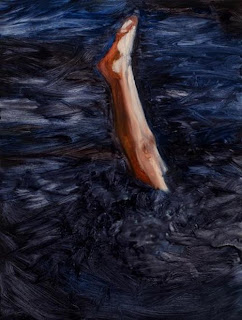 |
| The Phantom Coach (Derived from an illustration by Paul Lowe) |
Since the theme for the week is bad happenings on the road, we can discuss a related horror trope. Travel is not an easy undertaking in the world of classic ghost stories. When you find yourself in a strange environment, all sorts of weird things might come across your path. And such is the case with our story tonight, Amelia B. Edwards' Phantom Coach, written in 1864.
Our protagonist finds himself lost on the British moors during a snowy night. He is desperate to return to his young wife and, after a sequence of foreshadowing incidents, he encounters a coach. Things are not as they seem. ;-)
 |
| Amelia B. Edwards |
Here's my favorite part:
There could be no doubt, however, of the fact, for the lamps grew larger and brighter every moment, and I even fancied I could already see the dark outline of the carriage between them. It was coming up very fast, and quite noiselessly, the snow being nearly a foot deep under the wheels.
And now the body of the vehicle became distinctly visible behind the lamps. It looked strangely lofty. A sudden suspicion flashed upon me. Was it possible that I had passed the cross-roads in the dark without observing the sign-post, and could this be the very coach which I had come to meet?
Noooo!!!!!































